
Tom
gamer level 10
184716 xp
184716 xp
followers
62
62
Use my invite URL to register (this will give me kudos)
https://boardgaming.com/register/?invited_by=tstanley
profile badges




recent achievements

Chief Inspector
Follow a total of 40 games
Follow a total of 40 games

Explorer - Level 6
Earn Explorer XP to level up by completing Explorer Quests!
Earn Explorer XP to level up by completing Explorer Quests!

Rated 100 Games
Rate 100 games you have played.
Rate 100 games you have played.

Watchtower
Follow a total of 40 other gamers.
Follow a total of 40 other gamers.
Player Stats
Critic (lvl 4)
2625 xp
2625 xp
Explorer (lvl 6)
6541 xp
6541 xp
Professor (lvl 4)
1851 xp
1851 xp
Reporter (lvl 5)
3699 xp
3699 xp
About Me
Most of my gaming is of the two player sort. I enjoy Pandemic, Jaipur, Carcassonne, and Ticket to ride. I also like Love Letter and Splendor. As my game play experience increases, I look for games that play well with two players and last 45-60 minutes. Also, I find that I am slowly venturing into and exploring more complex games.
Worker placement games now fascinate me more than ever, and I enjoy the balance of a good cooperative game. A great game night starts with a light to moderately competitive worker placement / resource management type game followed by a cooperative. Sometimes I feel like competing and really working my brain, but on many occasions I like the teamwork aspect of coops. I am hoping soon to try some of the more complex coops like Freedom: The Underground Railroad, Ghost Stories, and Defenders of the Realm.
































































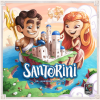











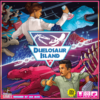

























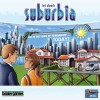
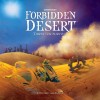



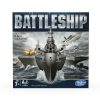






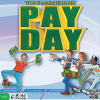


















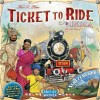
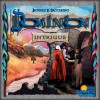






















Lost Cities: The Card Game
Lost Cities is another of Reiner Knizia’s two-player only games. My edition is one of the Kosmos 2 player line. It has some similarities to Battle Line, as both games have players facing one another and placing cards in columns. The gameplay is easy and quick, and most anyone can grasp the rules in a couple of minutes. The endgame scoring can be a bit tedious, but not terribly so.
The cards and a narrow board make up the components, and they are of good quality. But for some inexplicable reason, Lost Cities’ cards are oversized. It makes them more much difficult to shuffle than a standard deck. I find that card size matters. The small cards of Takenoko, Elder Sign, and Ticket to Ride are often criticized for their poor handling characteristics. Oversized cards are marginally better than the minis, but just a bit. Why not make them the size of regular playing cards?
Gameplay is simple and straightforward, but it is not especially thematic. Players must choose from among five “expeditions” to fund. They may pick from five colored suits of cards, and play them in ascending order in columns marked by the play board set between the two players. On a player’s turn, he plays or discards one card and draws another. When the draw deck is exhausted, the game ends. Players then tally their scores. Each started expedition costs a player 20 points, so it is critical that the sum of a player’s cards total 21+ points. Otherwise, an expedition can result in a negative score.
“Handshake” cards can be played as a multiplier for the point value of an expedition. But they must be played before any numerical cards are played. A player can multiply the subtotal (the value of the numerical cards minus 20) of his expedition times two, three, or four by playing one, two or three handshake cards. Using the handshake cards is a gamble, because negative scores also will be subject to the multiplier. A low scoring expedition with four handshake cards can result in a huge scoring deficit.
Lost Cities is a staple of introductory, two player games. It serves as a good filler game that is perfect when time is short. Players can play three rounds (a good number) in about 15-20 minutes. Setup is quick and easy, and most anyone can understand the rules of play. The game is inexpensive and occupies little shelf space. Along with Battle Line, Lost Cities is a light, fun card game for two from Reiner Knizia.